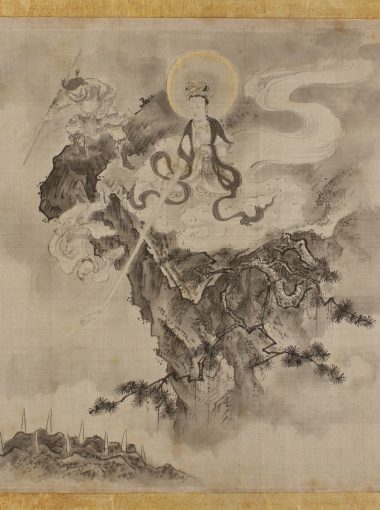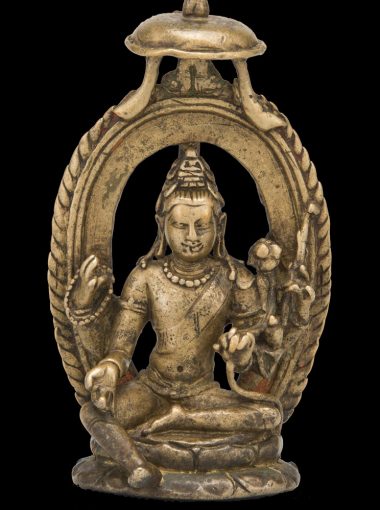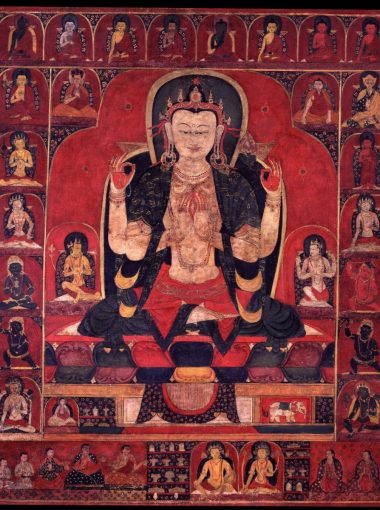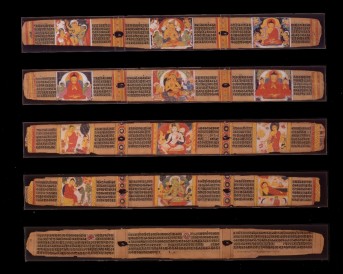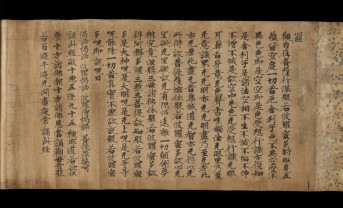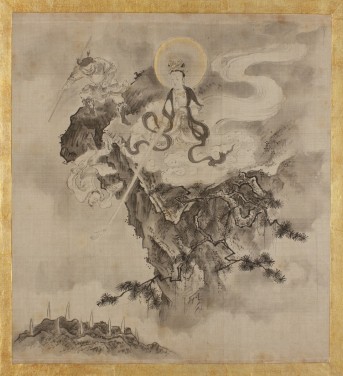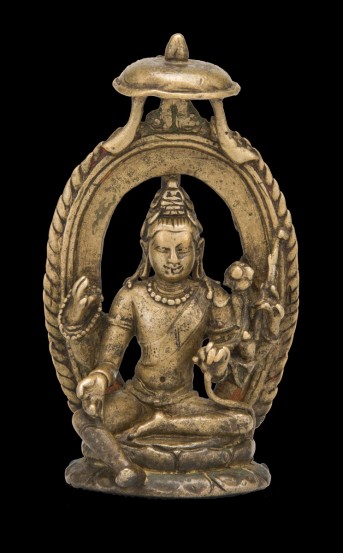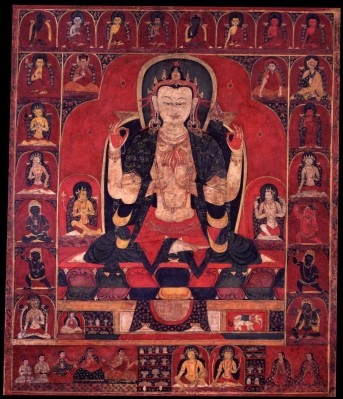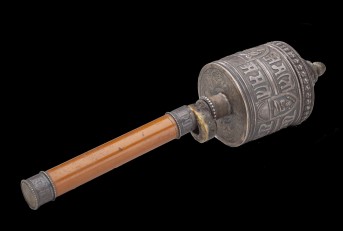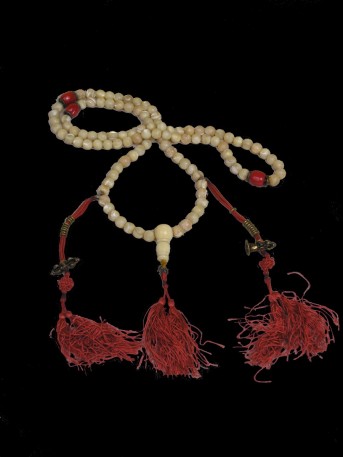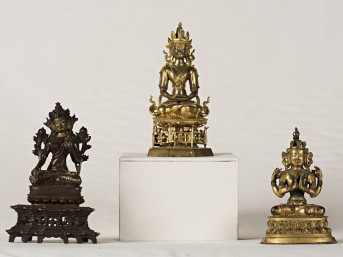Practice
This section presents objects that relate to daily spiritual activities, such as spinning prayer wheels, reading, copying or venerating sutras, paying homage to statues and paintings, reciting mantras, and engaging in elaborate Vajrayana techniques of visualizing the deity. Both art and practice aim to purify devotees of any impediments blocking their potential for unbiased wisdom and compassion. Although each country represented in this exhibition has different traditions and forms of practice, the common goal is to seek freedom from the sufferings of samsara. The objects included here establish Avalokiteshvara’s key role in assisting devotees to attain Mahayana Buddhism’s most sacred goals.
20. Five Leaves from an Ashtasahasrika Prajnaparamita Manuscript
India, Bihar, Nalanda monastery, Pala period, late 11th century; ink and opaque watercolor on palm leaf; each approx. 2 7/8 x 22 3/8 in.; Asia Society, New York, Mr. and Mrs. John D. Rockefeller 3rd Acquisitions Fund, 1987.1, photo: Susumu Wakisaka, Idemitsu Museum of Arts, Tokyo, Courtesy of Asia Society, New York.
21. Sumidera Heart Sutra (Sumidera shingyo)
Japan, Nara period, 710–794; handscroll, ink on paper; 9 x 16 11/16 in.; Princeton University Art Museum, Museum purchase, Fowler McCormick, Class of 1921, Fund, 2012-99, photo: Princeton University Art Museum/Art Resource, NY.
22. Page from the Illustrated Miracles of Kannon, Gold Inscribed Kannon Chapter of the Lotus Sutra
Japan, Edo period, 1615–1868; silk, ink, and gold; 14 1/2 x 13 1/2 in.; The Newark Museum, Purchase 1909 George T. Rockwell Collection, 9.2313.
23. Avalokiteshvara
India, Pala period, 9th century; copper alloy; 4 1/2 x 3 x 2 1/8 in.; long-term loan from the Nyingjei Lam Collection to The Rubin Museum of Art, New York, L2005.9.4.
24. The All-seeing Lord with Four Arms, Avalokiteshvara Chaturbhuja
Tibet, 14th–15th century; pigment on cloth; 22 1/4 x 18 1/2 in.; The Rubin Museum of Art, New York, C2002.8.1.
25. Avalokiteshvara Mandala
India, Dharamsala, September 1991; painting on cloth; image: 22 3/4 x 22 3/4 in., framed: 29 3/4 x 29 1/2 in.; Jacques Marchais Museum of Tibetan Art, 92.11.1025.
26. Prayer wheel
Tibet, 19th century; metal, wood, bone, paper; 11 x 2 3⁄4 in.; The Newark Museum, Gift of Mary Pyne Cutting, 1982, 82.82, photo: Robert Goodbody, Courtesy of Princeton University Art Museum.
27. Mother of Pearl Prayer Beads
Tibet, early 19th century; mother of pearl, coral, ivory, silver alloy, copper alloy; 21 3/4 x 2 1/8 x 1/2 in.; The Rubin Museum of Art, New York, Gift of Anne Breckenridge Dorsey, C2012.49.
28, 29, 30. White Tara, Amitayus, Six-Syllable Lord of the World (Shadakshari Lokeshvara)
Amitayus (Center), China, Qing dynasty, 18th century; gilt bronze; H. 7 1/8 in.; The Frances Lehman Loeb Art Center, Vassar College, Gift of Daniele Selby ’13, 2014.31.4.
White Tara (Left), Sino-Tibetan, 19th century; bronze with cold gold and inlays; H. 7 in.; The Frances Lehman Loeb Art Center, Vassar College, Gift of Daniele Selby ’13, 2014.31.1.
Six-Syllable Lord of the World (Shadakshari Lokeshvara) (Right), Tibet, 18th century; gilt bronze; H. 5 3/4 in.; The Frances Lehman Loeb Art Center, Vassar College, Gift of Daniele Selby ’13, 2014.31.3.




